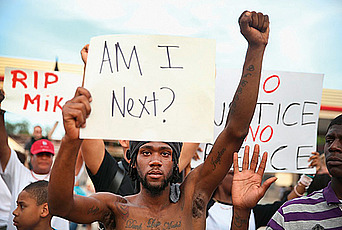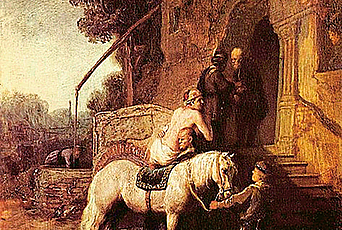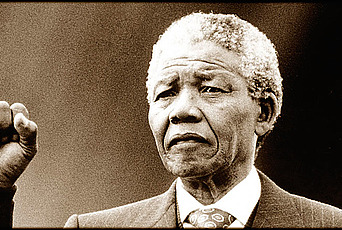Renegade Dreams: Living Through Injury in Gangland Chicago

The following text is excerpted from Renegade Dreams: Living Through Injury in Gangland Chicago (University of Chicago Press, 2014). Written by Laurence Ralph while a Member (2012–13) in the School of Social Science, the book combines African American studies, the scholarship on disability, and the field of critical medical anthropology to show how injury plays a central, though underexamined, role in the daily lives of poor urban blacks. Ralph is Assistant Professor in the departments of African and African American Studies and Anthropology at Harvard University.
Anyone hoping to find quick references to Chicago’s notorious gangs and infamous neighborhoods in this ethnography will be disappointed—as will anyone skimming the pages to find glossy snapshots of gang members. What is real about this ethnography—what hasn’t been altered or rendered anonymous—are the events that I describe and the voices of my collaborators. Their voices bring to life the activities that take place on Chicago’s street corners. Their voices bring dimension to people’s identities and life struggles. Their voices paint a portrait of the variegated desires that stem from imagining life anew.
It’s fitting in this regard that the painting that begins this book—Kehinde Wiley’s work The Chancellor Seguier on Horseback (2005)—accurately captures the spirit of what it means to have a renegade dream. Wiley, a critically acclaimed portrait painter, is renowned for his heroic portraits that capture the status of young urban blacks in contemporary culture through reference to Old Master paintings. Adapted from a seventeenth-century Charles Le Brun painting Chancellor Séguier at the Entry of Louis XIV into Paris in 1660, Wiley’s rendition blurs the boundaries between traditional and contemporary modes of representation by restaging the figures, and thus creating a fusion of period styles. Dressed in modern army fatigues and sweatpants, bandannas and baseball caps, T-shirts with airbrushed rappers and Air Force One sneakers, the figures in Wiley’s composition are beautifully anachronistic. Yet the genius in Wiley’s work is that it leads us to question: Why can’t urban African Americans assume the delicate harmony and militant posture reminiscent of a Renaissance master? This book seeks to similarly restage urban blacks within societal institutions and fields of power from which they are often presumed to be excluded. Despite the statistical odds against their dreams coming to fruition in such a context, I foreground the resilience it takes for black Chicagoans to keep dreaming anyway.
__________________________
There are so many kinds of dreams. But in the long tradition of African American activism, dreams have typically been linked to concrete aspirations for social reform. In his 1951 poem “Harlem,” Langston Hughes, writer and social activist, famously questioned the outcome of a “dream deferred.” Does such a dream dry up, fester, stink, crust and sugar over, or sag like a heavy load, he pondered. Then, foreshadowing the hundreds of race riots that would take place in the 1960s and 1970s, he ends his poem with an emphatic query: Or does it explode?
__________________________
The Eastwoodians with whom I spent my days and nights over the course of three years were intimately linked to dreamers like [Barack] Obama. This was not merely because he eventually became their senator and then their president, but because he learned his first political lessons in Altgeld Gardens, an inner-city neighborhood like their own. They were also linked to dreamers like Hughes, through the tortured history that led African Americans to migrate from the South and settle in northern outposts like Harlem and Chicago; they were linked to dreamers like [Martin Luther] King through civil rights organizations, such as the Southern Christian Leadership Conference (SCLC), that met and strategized in churches and parks and run-down houses all over the West Side of Chicago. Yet their Eastwood dreams were not tied to a particular social movement like the Harlem Renaissance or the civil rights crusade. No charismatic figure vocalized their aspirations for them. Quite the opposite, in fact, particularly for the young black men at the heart of this story. Local leaders often articulated the problems of their community in terms of the “crisis of the young black male.”
The people I lived with did not speak from a position of institutional authority; they knew that no one, except maybe green graduate students, cared much about their dreams. Nevertheless, Eastwoodians—young and old, male and female alike—dreamed in ways that expressed desires for a different world. Now lest I be accused of suggesting too rosy a picture, I should say that these dreams were not grandiose. These were not the genre of dreams that have been Disney-fied and squashed into the storybook realm. In fact, when I first moved into Eastwood, I did not recognize residents’ struggles as dreams because they were often quite banal. Safe passage to school became something to dream for, as did a stable job and affordable, livable housing. These dreams, it is critical to note, didn’t always come true: Children were gunned down on the way to school; adults searched for work to no avail; the threat of displacement haunted residents daily. In the face of these hardships, the scant resources that Eastwoodians did obtain barely scratched the surface of actual need. The brutal honesty with which they acknowledged the difficulty of real change suggested that the power of such dreams is in having them and working toward them, regardless of whether or not they come to fruition.
Another remarkable thing was this: Eastwoodians’ dreams were tied to overcoming the very obstacles—mass incarceration, HIV, gun violence—that are often discussed by reporters, government officials, and scholars in terms of the ways they incapacitate people. Slowly, I began to realize, if injury immobilizes people, like that fatal bullet that fractures the spine, then dreams keep people moving in spite of paralysis. Everywhere I went—high schools, detention centers, churches, and barbershops—I witnessed people exerting tremendous effort in a desperate attempt to pursue their passions. The more time I spent with residents like Justin and Amy, the more I began to understand: In Eastwood, injury endows dreams with a renegade quality.


